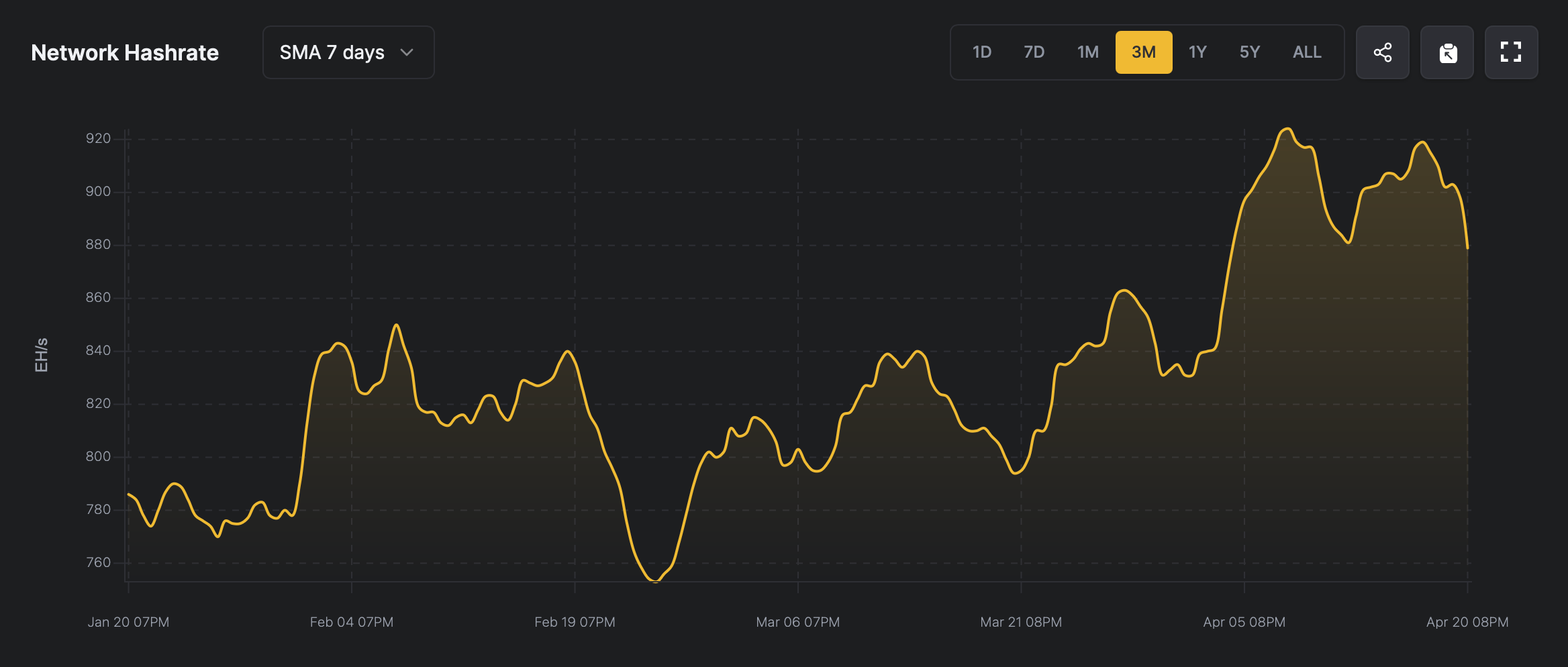From 920 EH/s to 868 EH/s: Bitcoin computing power dropped by 50 EH/s

After reaching an all-time high of 926 exahashes per second (EH/s) and increasing difficulty by 1.42% to 123.23 trillion, the network has lost around 52 EH/s since April 17.
Increased difficulty and decreased hashrate lead to increased block times
Bitcoin's computing power has fallen since last week, when it reached 920 EH/s — just shy of its April 8 record of 926 EH/s. Since April 17, when the hashrate was at 920 EH/s, the network has lost 52 EH/s, leaving the current total at 868 EH/s.
The move coincides with a rise in mining profitability over the past 24 hours, as the hash price — or the implied spot price of one petahash per second of hashing power — rose from $43.53 to $45.73 by 11 a.m. ET Monday. Bitcoin’s breakout of $88,000 has boosted the hash price and mining profitability.
 Bitcoin network hashrate as of April 21, 2025, 7-day simple moving average (SMA) according to hashrateindex.com.
Bitcoin network hashrate as of April 21, 2025, 7-day simple moving average (SMA) according to hashrateindex.com.
In contrast, on April 19, at block height 893,088, the network difficulty reached a record 123.23 trillion. This was the fourth difficulty adjustment since block 887,040, making it much more difficult for miners to find blocks.
These fluctuations demonstrate how miners’ actions react quickly to economic signals and protocol changes, highlighting the delicate balance of incentives and challenges. As profitability increases and difficulty increases, the balance of the network constantly shifts, demonstrating the flexibility, resilience, and tenacity of the Bitcoin engine.
After the last difficulty increase and hashrate decrease, block intervals are now around 10 minutes, with an average of 57 seconds. This resistance suggests that the next difficulty adjustment could see a significant decrease, but it is too early to tell as the recalibration is scheduled for around May 4, 2025. However, forecasts currently predict a significant decrease of 8.7%.
Source: cryptonews.net



